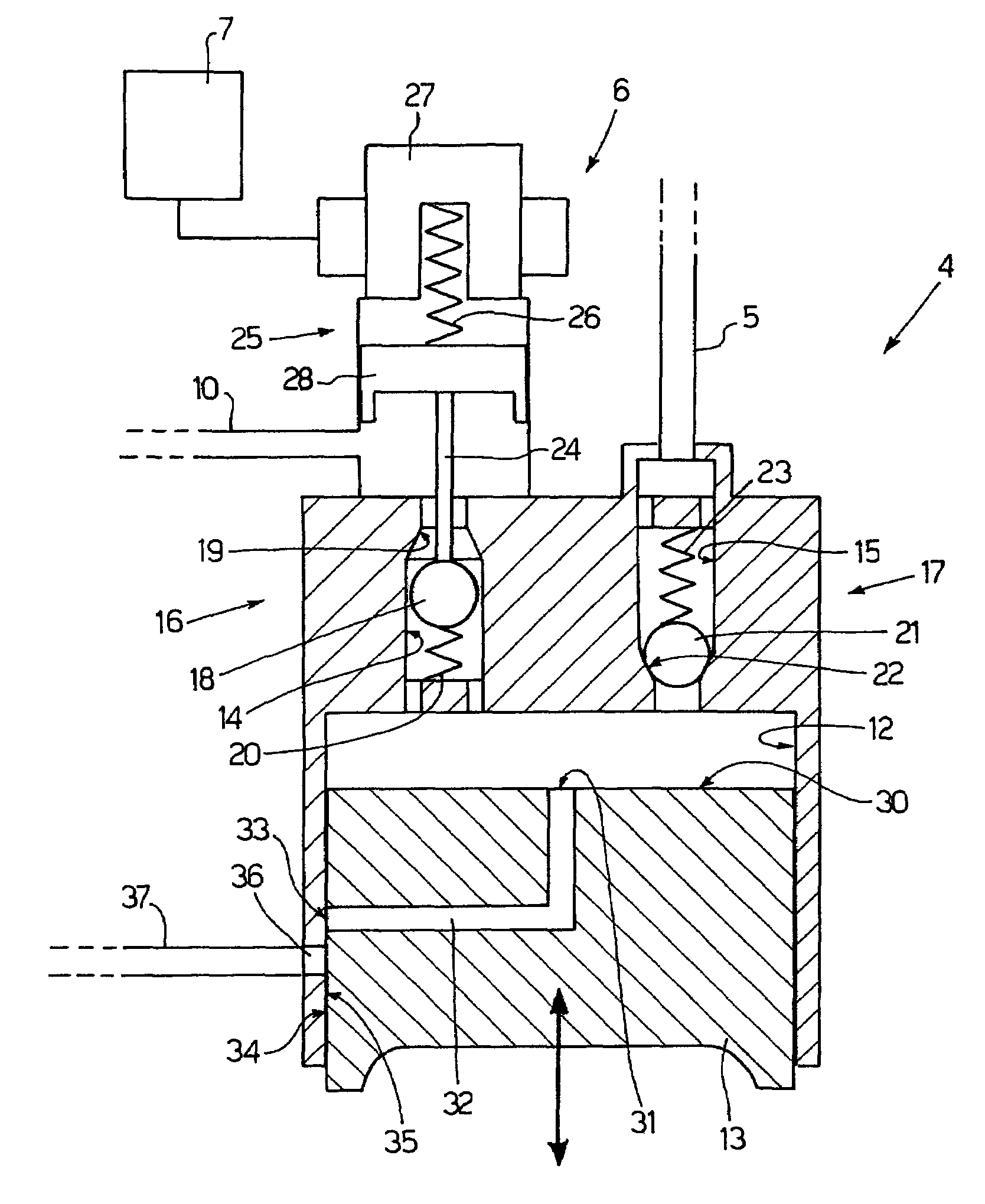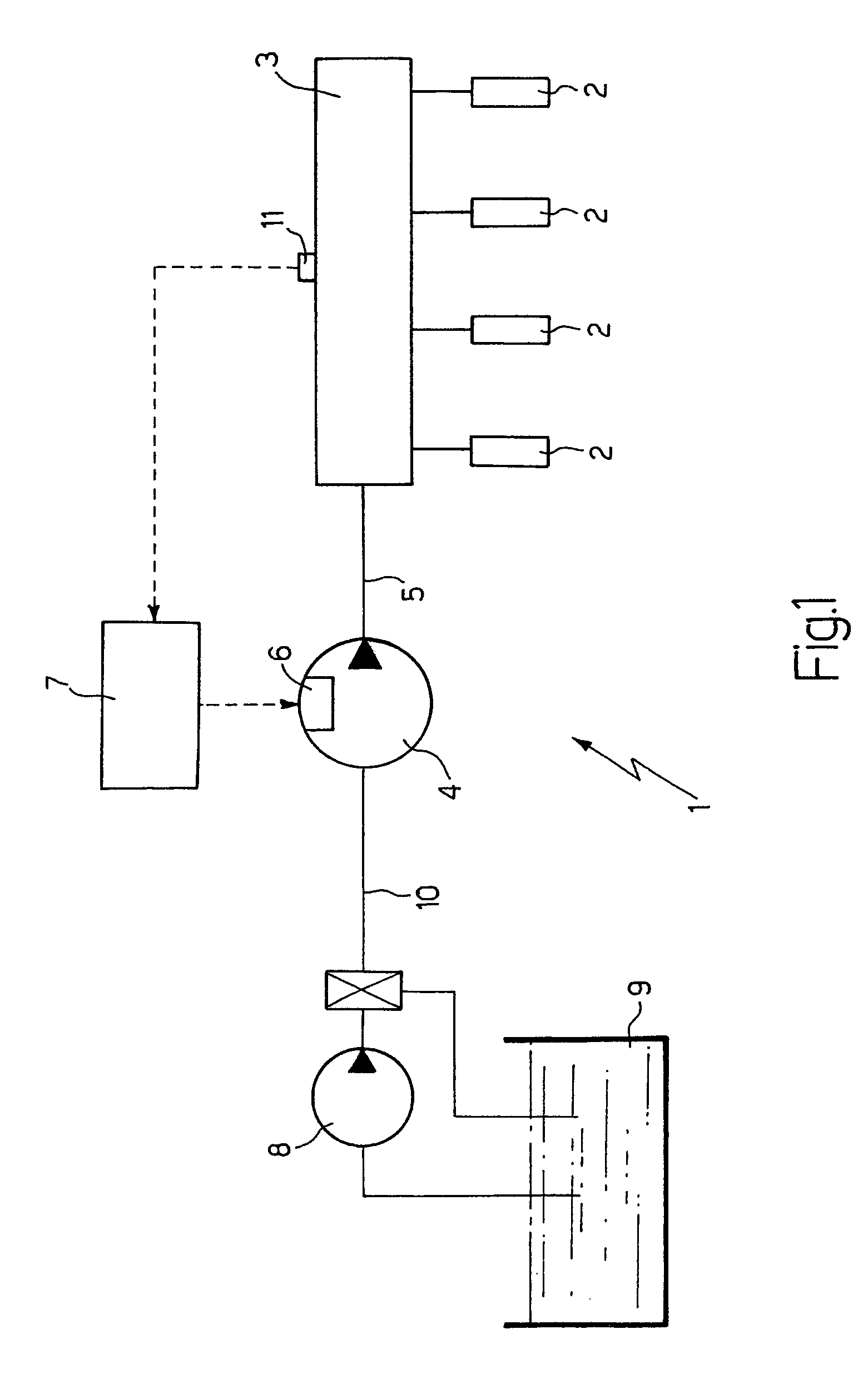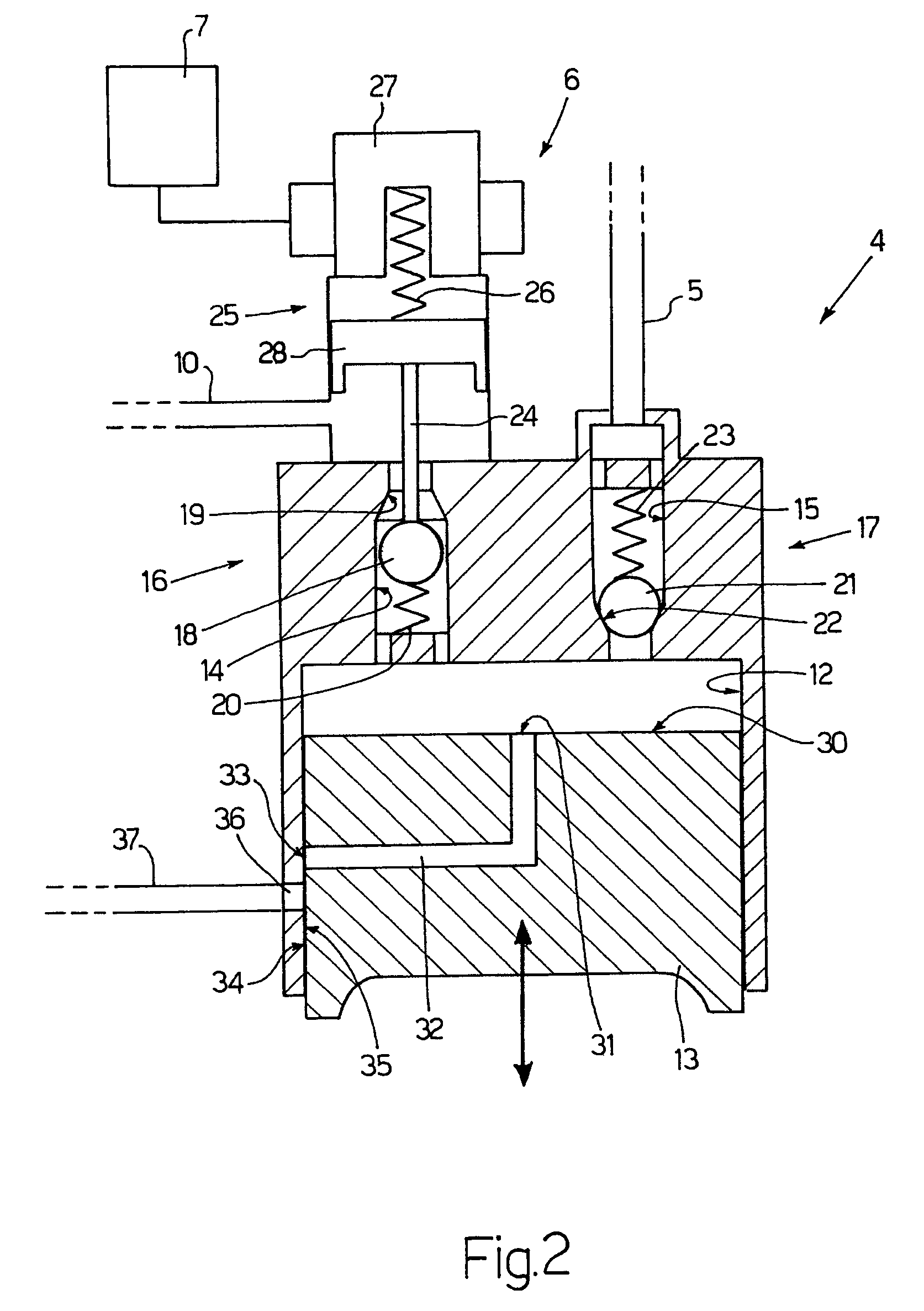Method and system for the direct injection of fuel into an internal combustion engine
a technology of fuel injection and internal combustion engine, which is applied in the direction of fuel injection apparatus, machine/engine, charge feed system, etc., can solve the problems of low energy efficiency of known injection system, system overheating of fuel, and “pointless” work performed by the high-pressure pump in pumping fuel that is subsequently discharged by the pressure regulator, etc., to achieve simple and economic effect of implementation
- Summary
- Abstract
- Description
- Claims
- Application Information
AI Technical Summary
Benefits of technology
Problems solved by technology
Method used
Image
Examples
Embodiment Construction
[0023]In FIG. 1, 1 denotes an overall common-rail type system for the direct injection of fuel into an internal combustion engine provided with four cylinders (not shown in detail). The injection system 1 comprises four injectors 2, each of which is capable of injecting fuel directly into the crown of a respective cylinder (not shown in detail) of the engine and receives the pressurised fuel from a common rail 3. A high-pressure pump 4 supplies the fuel to the common rail 3 by means of a tube 5 and is equipped with a device 6 for regulating flow rate driven by a control unit 7 capable of maintaining the fuel pressure within the rail 3 at a desired value, which is generally variable over time as a function of the operating conditions of the engine. A low-pressure pump 8 with a substantially constant flow rate supplies the fuel from a tank 9 to the high-pressure pump 4 by means of a tube 10.
[0024]In general, the control unit 7 regulates the flow rate of the high-pressure pump 4 by mea...
PUM
 Login to View More
Login to View More Abstract
Description
Claims
Application Information
 Login to View More
Login to View More - R&D
- Intellectual Property
- Life Sciences
- Materials
- Tech Scout
- Unparalleled Data Quality
- Higher Quality Content
- 60% Fewer Hallucinations
Browse by: Latest US Patents, China's latest patents, Technical Efficacy Thesaurus, Application Domain, Technology Topic, Popular Technical Reports.
© 2025 PatSnap. All rights reserved.Legal|Privacy policy|Modern Slavery Act Transparency Statement|Sitemap|About US| Contact US: help@patsnap.com



